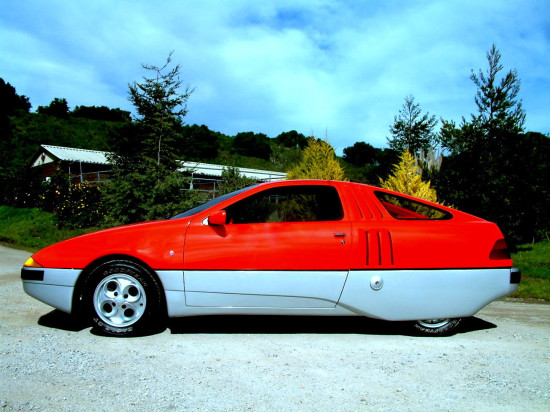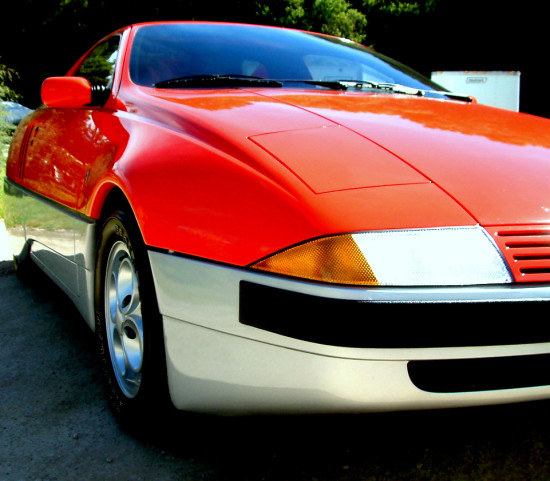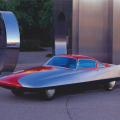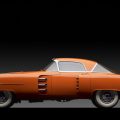t may come as a shock to many people, and especially those in the art and design community, but it wasn’t until 1982, roughly 100 years into the automotive industry’s iconic history, that the first car ever designed by a woman came to be. General Motors had “Women Designers” as far back as the 1950’s but they dealt mostly with fabrics and colors and not until 1982 was a car totally designed from the outset to completion by a woman. The car that broke the mold was Brezza, a design in high level aerodynamic artistic vibrancy, and the woman responsible is Marilena Corvasce, a woman hired by Italian car designer Giorgetto Giugiaro some 15 years prior to completion of Brezza.
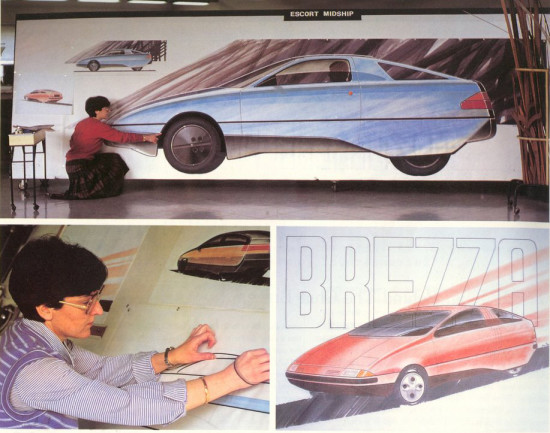
Not a color and trim specialist, as many of her female predecessors and contemporaries were, Marilena defied convention, or better put, her talent as a full fledged designer would not allow her to be confined to one level of design or another at Ghia. Hired by well known designer Giugiaro 15 years prior to creating “Brezza”, Marilena Covasce was as solely responsible for the outcome as one can be in the automotive industry, past, present or future.
One of 4 designers at Corrozzeria Ghia, and the only woman of the bunch, Marilena is an artist to her core and always wanted to be able to allow her creative expression through art be her career. Being the first woman designer of a car was never on the radar of Marilena Corvasce, not by a long shot, that was not her style. She notes that the first year of her life after college was the most “beautiful of her life” as she waited for a job opportunity, as she was allowed time to pursue her personal artistic ambitions. But like most artists, no matter how high the skill level (and Corvasce was high level both technically and creatively) she needed to pay the bills another way. Thus, she gained employment at Carrozzeria Ghia as a car designer.

During her time at Ghia, when not working in the design studio, Marilena’s interests lied in the fine arts in human based portraits of her own imagination as well as 3 dimensional wood sculpture. Like most artists, even the incredibly creative and technically savvy among the crowd, Marilena needed her job at the design studio, and her abilities and vision helped her to get to such a high level position in at Ghia. By her own admission, she would much rather have been concentrating solely on her personal artwork.
Known at her employer Ghia as a woman with very clear visions and ideas with strong but practical approaches to design, Marilena put in the work to come to her final designs. Chief designer at the time “Brezza” was built, Filippo Sapino describes Marilena’s straight forward self titled “I just do it” approach to design as follows: “You see, when she starts a new project she takes a ream of paper and sketches out hundreds of ideas. She creates mountains of sketches that she doesn’t even show us. She continues this process until she arrives at a solution of which she is convinced”. Politically correct or not, this exact reasoning in her work and approach to design is likely what allowed her to become trusted to such a level that Brezza was put under her full control. To say Marilena Corvasce was a strong personality with an unwavering talent and vision for the design process would be an understatement, and in order to become the first woman in such a male dominated industry, this was exactly what she needed to be.
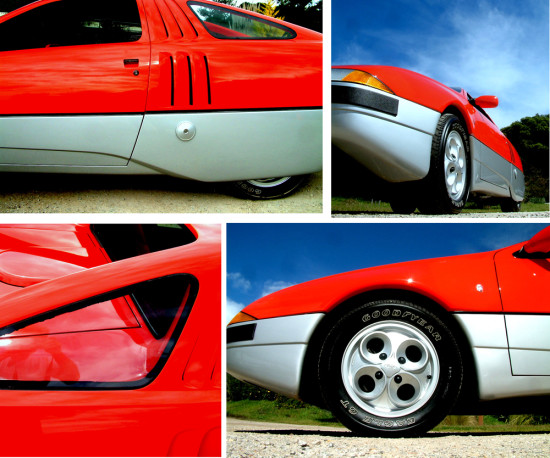
In 1982, the Ghia “Brezza” (or “Breeze” in English) was shown in Turin, Italy for the first time. It was an excersie in maximum aerodynamic efficiency. Apart from the general layout of the car, great attention was paid to the “little things” in order to achieve maximum results in reducing drag.
At the end of the day, Marilena was not given the job of designing Brezza because she was a woman or for any publicity reasons, but rather because she was an experienced, competent automotive designer who happened to be a woman. It cannot be understated what a big accomplishment it is when you’re the “first” of your gender to accomplish anything, whether it be in industry or otherwise, but the most important thing that has been stressed to me in my research on this topic is that she was more than the proper choice regardless of her gender to design this project.

Commissioned by Ford, Ghia and Marilena Corvasce, under the tutelage of Cheif Designer Filipino Sappino , as the design mind for the Brezza, was tasked with creating a fully functioning prototype (basically a car that is road worthy, but a “One Off” not meant for production). The design needed to be outlandishly aerodynamic, with little details everywhere converting every ounce and curve of it’s components with maximum drag reduction…and this was all to be done not on a “never meant for the road dream car” where safety wasn’t a consideration, but a “street ready” car. The practical limitations put on Marilena’s design make the eventual end product all the more impressive!
Other design facts about women in the automotive industry:
Lady Docker, a socialite whose husband was associated with Hooper Body Company, was credited with “designing” a one off daimler shortly after World War II. Her participation was limited to advising, not actual design work, so the extent to which she was responsible for the final outcome is somewhat of a question.
The Society of Automotive Historians writes that Audrey Moore Hodges was probably the first full time female designer at a major auto manufacturer. Sher was hired as a female stylist at Raymond Loewy’s Studebaker design group in South Bend, Indiana. She worked on the 1947 Studebaker Champion’s interior and exterior components including the much imitated “torpedo” hood ornament. She designed portions of cars, and unlike Marilena was never credited with being associated with an entire design process.



